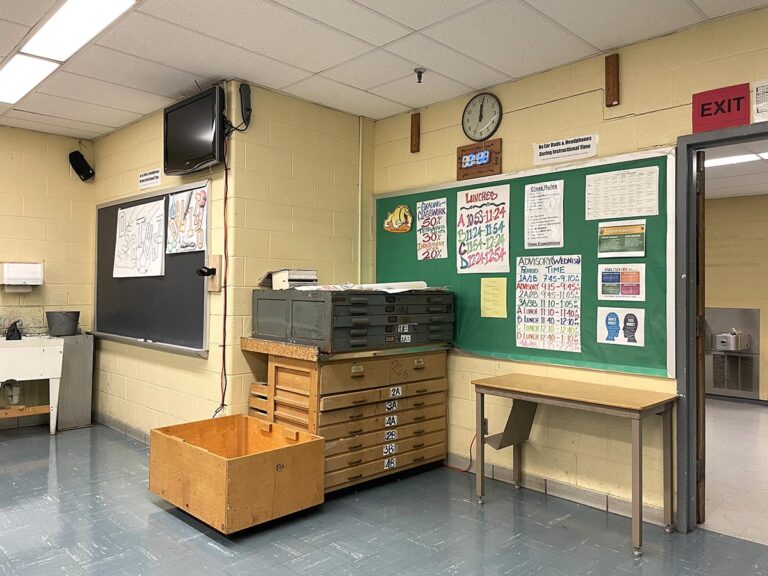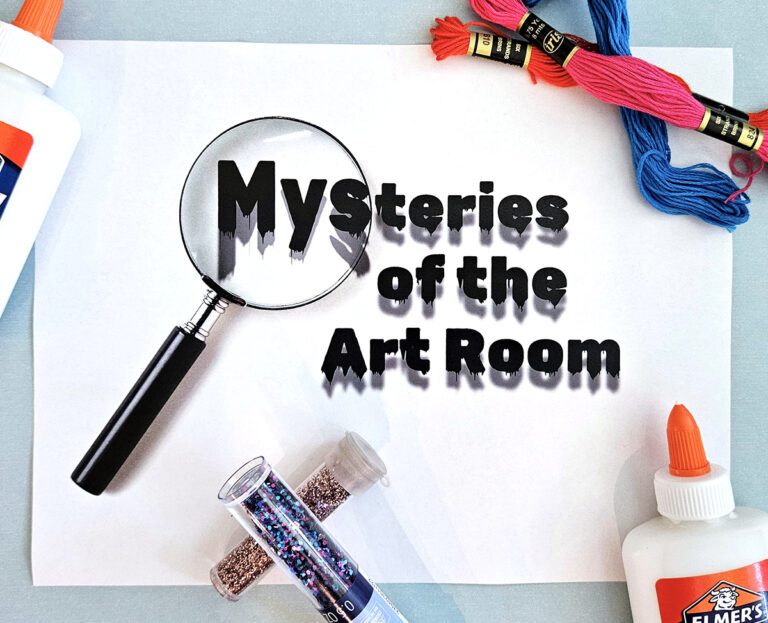Boxes filled with dried bones, jars of eggshells, and bags of pencil shavings. Is this a scene from a horror movie? No, it’s just the art teacher’s closet! How do art closets get filled with such curious and scary things? Let’s delve into your art closet and discover a world of hidden treasures or terrors! Join us on an exciting journey as we uncover forgotten supplies, unravel their purpose, and share ways to bring order to the chaos. Learn the art of deciding whether to keep, toss, or donate as you embark on an organizational adventure. Unlock the secrets of art storage and begin a quest for creativity and organization!
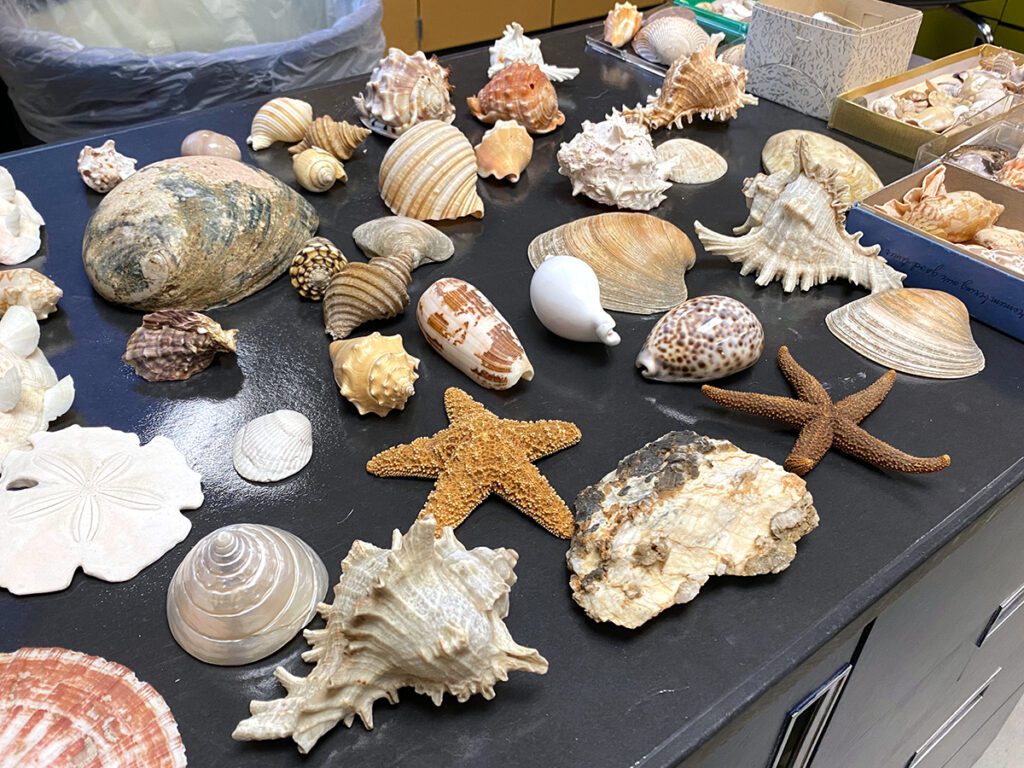
Unveil the Mysteries Inside the Closet
It’s strange but true! All of the things listed below were once discovered in the depths of an art closet. We posed the question to a group of art teachers, “What is the weirdest thing you found in your closet?” and these are just a few of the mysterious answers we received:
- Shampoo
- Police caution tape
- Dental impressions
- X-rays and brain scans
- Ant farm
- Holy water
- Skeleton, bird wings, and other bones
- Bags of beetles
- Dried mushrooms
- Bedroom slippers
- Pancake syrup bottles
- Bicycles
- Bed sheets
- Egg roll wrappers
- Bag of single shoes
- Doll heads
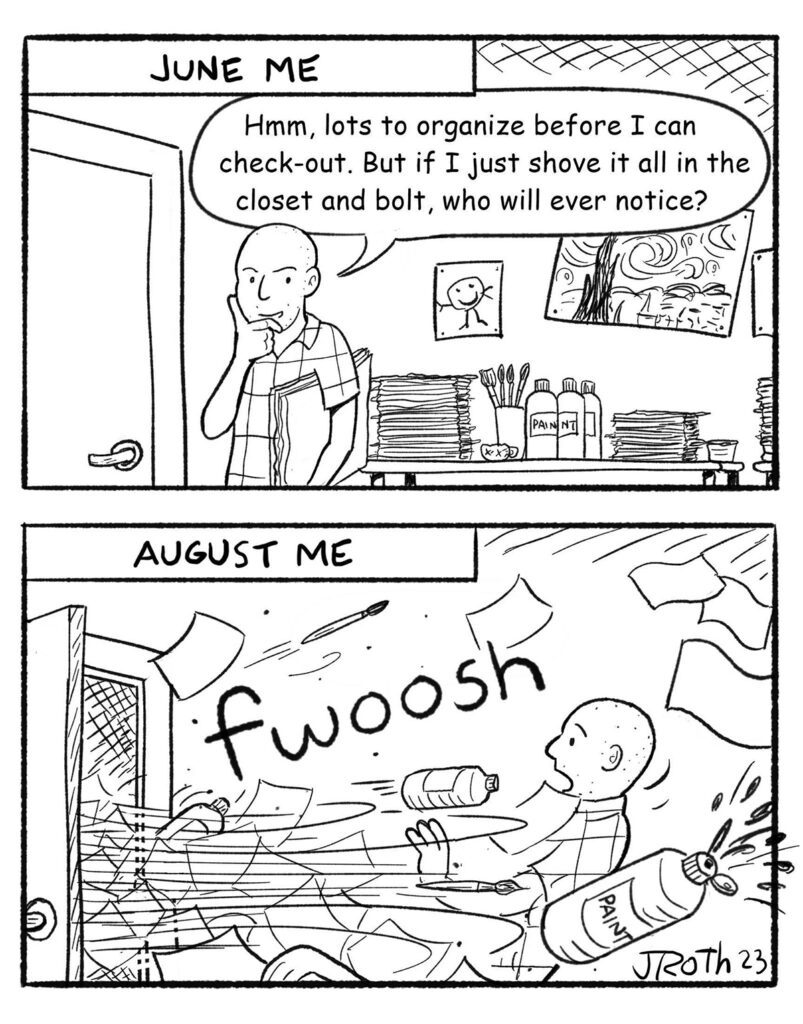
Decipher the Secrets: Identify Your Items
When faced with mystery items in your art teacher closet, be a detective and uncover their purpose. Here are three practical ways to help decode the unknown.
- Utilize research tools.
During your investigation, take advantage of technology. Tools like Google Lens can help identify unfamiliar objects by analyzing images or descriptions. Online art supply catalogs can also provide valuable information about unique materials. - Seek insight from fellow art teachers.
Connect with art teachers through email or social media platforms. Share photos or descriptions of the mysterious items and ask for their input. Their experiences and knowledge might shed light on the purpose or history of the supplies. For example, Jess, a middle school art teacher in Connecticut, found four-foot-tall rolls of rubber in various colors. After asking her colleagues, she found out they are for printmaking. - Experiment and test.
Sometimes the best way to understand the potential of a mysterious material is through hands-on experimentation. Take small samples and test them using various techniques or mediums. This exploration may reveal unexpected properties or inspire creative uses. Lee, a middle school art teacher in California, found margarita salt in her art closet. After experimenting, she found it made for great texture in watercolor paintings.
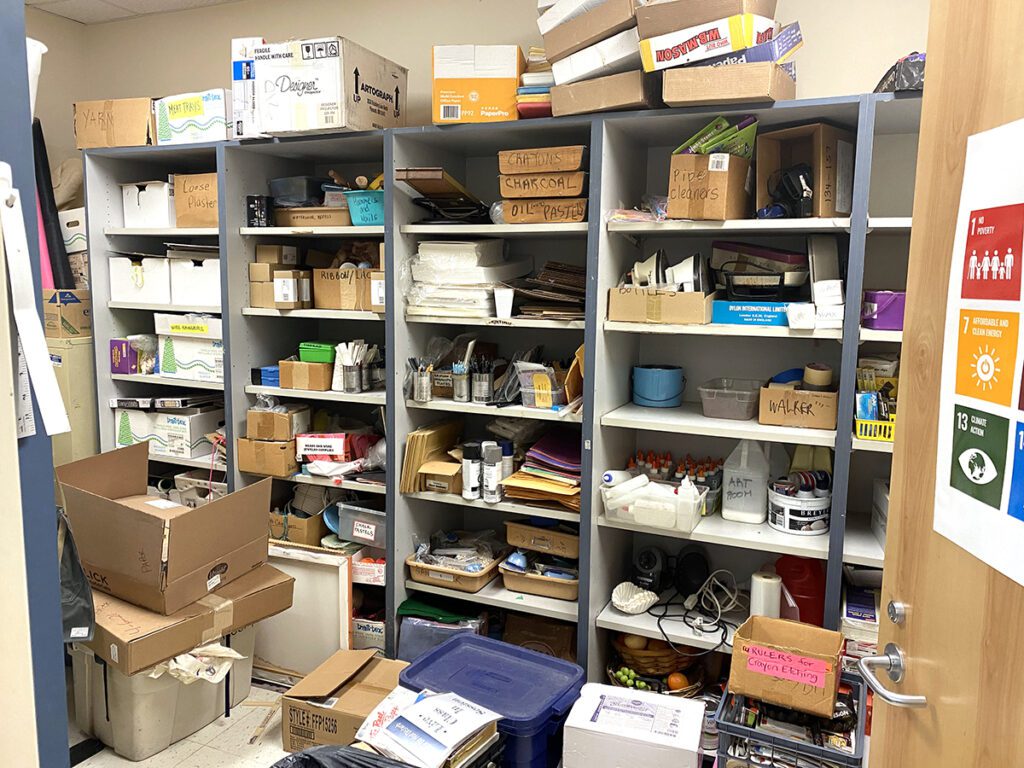
Determine Fate: Keep, Toss, or Donate
When organizing your art closet, you might face two different decision paths:
- “I must throw everything away!”
- “I think I have to keep it.”
Finding balance is key. Make informed decisions about each item based on its usefulness, condition, and potential for future art projects or student use. Also, it may belong to the district or school so do not throw it away without going through the proper channels.
Let’s dive into some guidance on how to determine the fate of each discovery you make:
- Assess the usefulness and condition.
Evaluate the usefulness and condition of each item. Consider whether it aligns with your teaching objectives or personal artistic pursuits. Assess its condition and determine if it can still serve its intended purpose effectively. Marsha, a middle school art teacher, found an entire garbage bag full of shoulder pads in her closet. The previous teacher used them for a project. Since they were no longer used in the current curriculum, she threw them away. - Consider storage limitations and space constraints.
Take into account the storage limitations and space constraints in your closet. If an item takes up excessive space or doesn’t fit well within the available storage, it may be necessary to part with it. Dawn, an art teacher in Texas, found an entire shopping cart filled with plastic sculptures. This took up too much space and was moved out. - Evaluate the potential for future projects.
Think about the potential for future projects or student use. If an item can contribute to engaging art activities or spark creativity in your students, it may be worth keeping. However, prioritize items that are practical and versatile. One teacher discovered hundreds of shoelaces in her closet. This could spark ideas for weaving, fiber arts, and even upcycled bracelets. - Troubleshoot with staff and administration.
When organizing your closet, remember to troubleshoot with colleagues. If you find art equipment or books that might belong to the county, check if there’s a system to redistribute them to other schools in need. Before getting rid of anything, ask an administrator or your supervisor for guidance. Also, be mindful that certain items need to follow special disposal guidelines. Talk to your custodial staff to ensure safe recycling or proper disposal methods. For example, a teacher in Ohio found a box labeled “Asbestos Squares.” These need to be handled and disposed of by a professional. - Explore donation opportunities.
Consider donating items that no longer fit your needs to other schools or art organizations. Angela, an art teacher from Florida, found over 40 hot glue guns buried in her closet. She was able to donate some to other teachers in her school. This allows you to support the artistic endeavors of others while also freeing up valuable space. Research local organizations or reach out to neighboring schools to find suitable recipients.
Make smart decisions about what to do with the items you find in your closet. In doing so, you ensure the closet becomes a curated space for creativity and organization for you and your students.
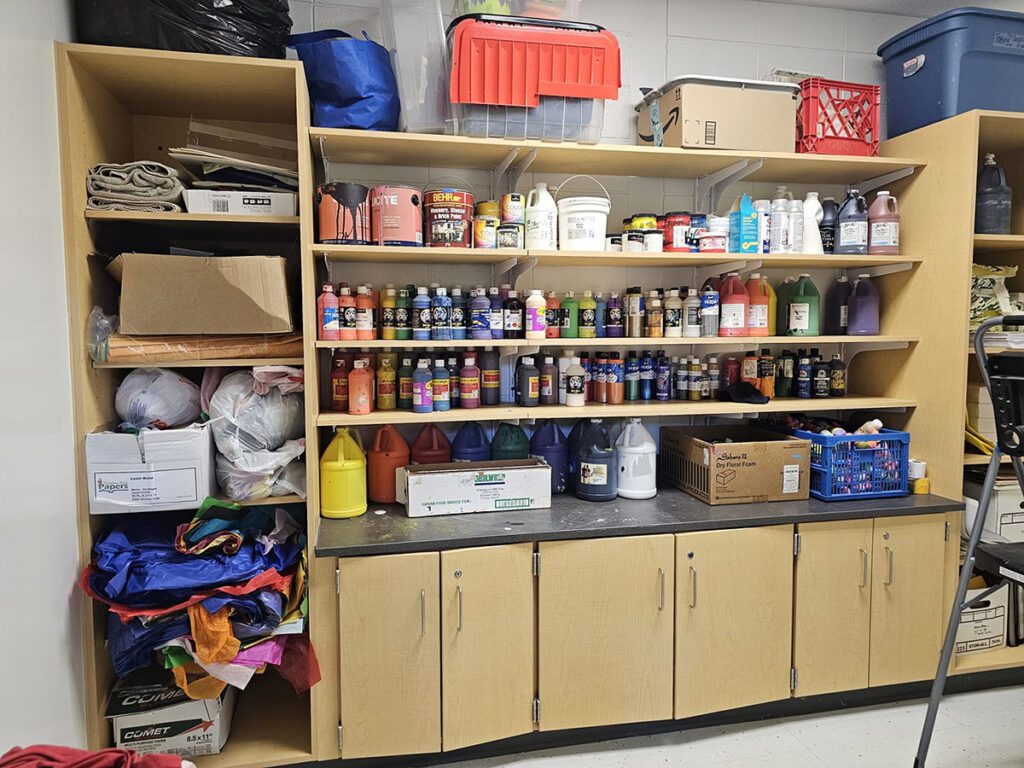
Unleash the Magic: Mastering Art Closet Organization
Creating a well-organized space for your art supplies is essential for a smooth workflow and easy access. For easy strategies to help organize your art closet or cabinets, start by watching the YouTube mini-series, Artfully Organized. Join Paula Liz as she tackles labeling, budget bins and caddies, storing art resources and supplies, and more!
Establish an inventory system to keep track of your art supplies. This does take a little legwork up front but it really helps to steward your supplies and budget well over time. It can be as simple as maintaining a spreadsheet or using inventory management apps. Note the quantity, condition, and location of each item. Add a product URL so that when it’s time to reorder, all you have to do is click the link and add it to your cart. Use a student assistant to regularly update the inventory. This allows you to know what you have and when it’s time to restock.
As an art teacher, you have a unique artistic perspective. Embrace it and let it shine through in your organizational approach. Think outside the box and find unconventional and personalized ways to arrange your supplies. Create custom dividers, use decorative boxes or baskets, and incorporate elements that reflect your artistic style. Repurpose and upcycle unused materials to add a touch of creativity. Even transform your closet into a mini gallery by showcasing examples of past art projects. Let your closet become a vibrant display of artistic achievements to remind you why you do what you do!
Get ready for an exciting journey into your closet’s depths, where organization and creativity intertwine! Unveil hidden treasures and decipher what unusual and new items are by snapping a photo for Google Lens or asking other art teachers. Determine the item’s fate: will you keep it, toss it, or donate it? Then, unleash your artistic magic, and add a personal touch. Use color-coded systems, artistic displays, and repurposed materials to create a captivating space where creativity thrives. Let your art teacher closet become a place that supports artmaking magic and allows art to take center stage!
What were the spookiest things you found in your closet or cabinet?
Share a strategy that tamed the terror in your art closet.
Magazine articles and podcasts are opinions of professional education contributors and do not necessarily represent the position of the Art of Education University (AOEU) or its academic offerings. Contributors use terms in the way they are most often talked about in the scope of their educational experiences.




